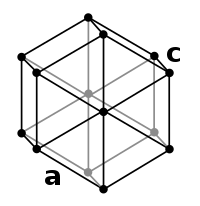
Photo from wikipedia
Abstract This paper introduces a novel Coke Oven Gas (COG) hydrogen purification/compression system based on the technologies of Pressure Swing Adsorption (PSA) and Electrochemical Hydrogen Purification and Compression (EHP/C). As… Click to show full abstract
Abstract This paper introduces a novel Coke Oven Gas (COG) hydrogen purification/compression system based on the technologies of Pressure Swing Adsorption (PSA) and Electrochemical Hydrogen Purification and Compression (EHP/C). As the EHP/C tolerates O2, N2 and CH4 impurities, PSA can be utilized solely for CO and CO2 removal (other COG impurities were not considered in this work). A relaxation of PSA hydrogen purity could significantly enhance its recovery rate. In this study, the suitability of traditional hydrogen PSA as part of the hybrid PSA/EHP/C approach was investigated. Aspen Adsorption and Matlab were used to model the PSA and EHP/C systems, respectively. The effect of adsorption pressure, purge-to-feed-ratio (P/F-ratio) and adsorption time within cycle on PSA performance is reported. This study found that breakthrough of non-detrimental components is typically accompanied with poisonous CO. Hence, the CO removal with traditional H2-PSA resulted into high purity product. In a two-bed PSA, 36.3% of hydrogen was recovered at 99.9988% purity and 0.18 ppm CO. Subsequently, as a result, the EHP/C purification capability was merely utilized, but polished this hydrogen to >99.999% purity. Simultaneously, hydrogen was isothermally compressed to 20 MPa, consuming a marginal 2.42 kWh/kg. Compared to mechanical compression, this is 31.6% more energy efficient. Recovering hydrogen from by-product COG was found to save 0.5 kg CO2/kg H2 compared to hydrogen produced from natural gas. Conventional hydrogen PSA, utilizing 70% Activated Carbon and 30% Molecular Sieve 5A, was found not to be effective to target the removal of CO specifically. To increase synergy between PSA and EHP/C, the PSA requires adequate design and operation using appropriate adsorbents and cycle steps to target elimination of CO. An increased EHP/C catalyst tolerance for CO also contributes to higher flexibility.